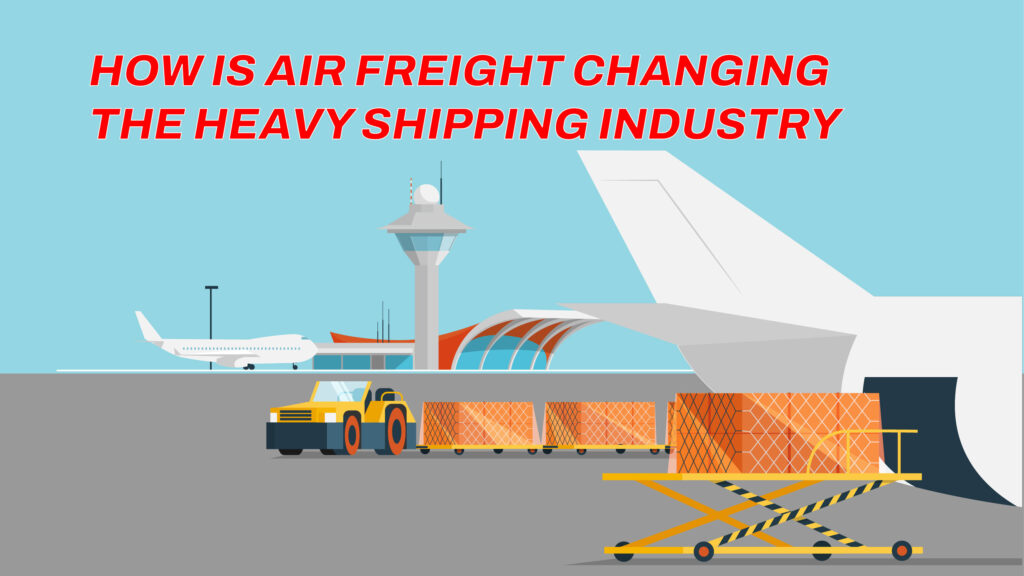Although there are fewer restrictions on cross-border shipping, some international aspects have had an unprecedented impact on cross-border trade. Increased gasoline costs pose a challenge to a sector that is already having trouble surviving by squeezing margins and profits. A detailed risk analysis must be conducted before steps can be taken to harmonize and regularise the rising demand for aviation freight.
The Changing Landscape of Air Freight
Cargo airlines continue to operate in challenging circumstances as a result of the ongoing violence in that region. This has a more significant impact than was initially thought. A sector that is already struggling to survive due to shrinking margins and profitability is challenged by rising gas prices. Before taking action to unify and regularise the expanding demand for aviation freight, a thorough risk analysis must be done.
The Air Freight Industry: Rising Trends
The pandemic has driven the irreversible trend of e-commerce, which is expanding every day to keep up with emerging technologies and shifting customer behavior. It offers convenience and quickness. Products can be delivered to customers the same day, the following day, or in two days. Additionally, they are able to shop from home. Additionally, they are free to go shopping whenever they choose, day or night. The International Air Transport Association (IATA) predicts that cargo demand in 2022 will exceed last year’s demand. That results in a significant increase in the pre-pandemic demand rate in 2019. As a result, this fast demand has overwhelmed traditional means of delivery.
The need for e-Commerce will only increase online. Many ports in Asia, Europe, North America, and South America are thinking of operating around the clock. This trend favors shippers and air carriers in addition to consumers. Looking past immediate congestion, cargo airport executives think this is a long-term solution.
How Air Cargo Capacity Changes
It is well known that there has been a scarcity of cargo capacity ever since Covid-19 began. There was a surplus of both ground and ocean cargo. Additionally, the need for capacity spread to air freight. In addition to the shift in consumer purchasing patterns, manufacturing has reached new highs.
The purchasing manager’s index (PMI) indicated gains from earlier months. This suggests that as pent-up demand is ultimately released, an economic growth trend may last for a while.
One way businesses are tackling this scarcity is by producing and upgrading cargo jets. Boeing had started converting passenger fleets to cargo jets, according to a 2021 CNBC report. To address the rising demand for e-commerce, Boeing also built new air cargo aircraft and modified old 737 passenger aircraft for firms like Amazon.
Long-term trends include the expansion of e-commerce and the general economic recovery. Long-term growth is anticipated, fuelled by innovative business practices and technological advancements. This will increase the difficulty of the trend of inadequate aviation cargo capacity.
Diversified Supply Chain
The diversification of supply chains is a hot topic right now as the economy begins to grow in 2022. On-shoring and near-shoring have expanded activity, which has raised the demand for order fulfillment and regional air freight.
Regional air freight shipping will probably become a well-known shipping method. There is a capacity limit for other modes, such as shipping by land and sea. Furthermore, capacity limitations and customer demand are not going to disappear any time soon.
The mid-and long-term plans seem to be defining air cargo as a significant mode of transportation. Diversifying the supply chain has led to a rise in air freight. As more businesses diversify their supply chains to reduce risk, the long-term prospects for air freight are also likely to improve.
Wrap it Up
Both air cargo and the supply chain business are changing. These new trends will transform the air cargo sector and, ideally, make daily operations more routine. These tendencies will start to materialize in a different order. However, what is noteworthy is that these patterns will have a long-term effect. They will alter technology and best business practices, which should lead to increased operational effectiveness and efficiency. To properly support logistics, the supply chain must change in tandem with the air cargo business.

